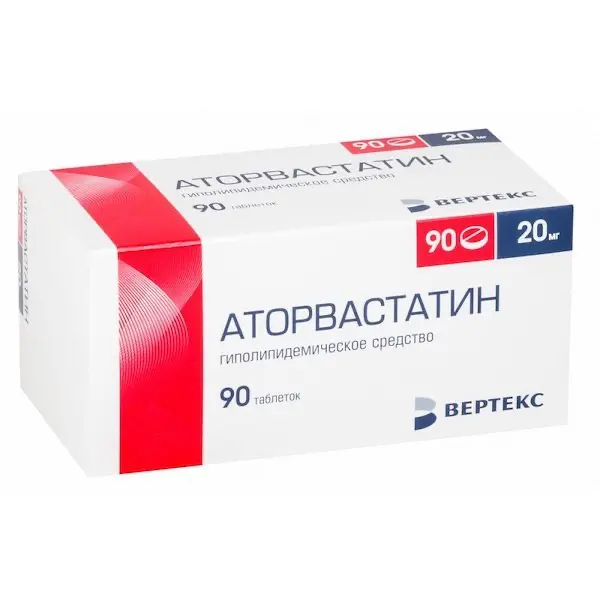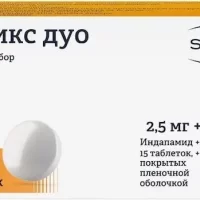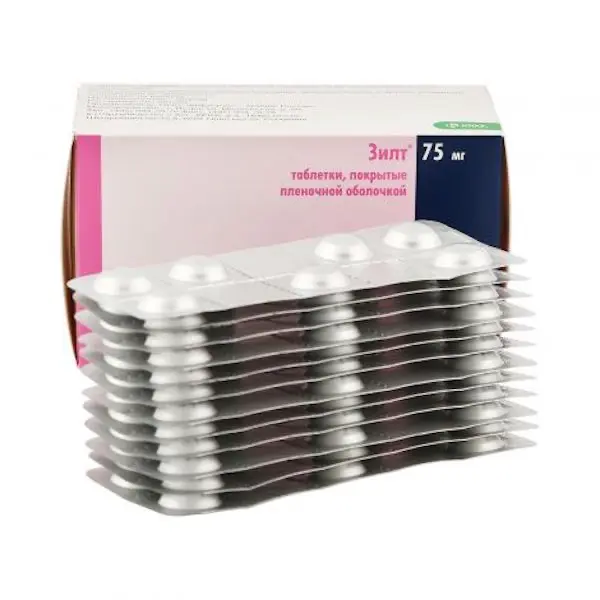Description
Renipril Pharmacodynamics
Pharmacological properties
Renipril® refers to medicines affecting renin-angiotensin-aldosterone system (RAAS), ACE. Renipril® is used for treatment of essential hypertension (primary arterial hypertension (AH) of any degree of severity of renovascular hypertension both in monotherapy and in combination with other hypotensive agents, in particular diuretics. Renipril® is also used for treatment or prevention of heart failure (CH).
Pharmacodynamics
Renipril® (enalapril) is a derivative of two amino acids: L-alanine and L-proline. After oral administration, enalapril is rapidly absorbed and hydrolyzed into enalaprilate, which is a highly specific and long-acting ACE inhibitor without sulfhydryl group.
ACE (peptidyl dipeptidase A) catalyzes the conversion of angiotensin I into the pressor peptide angiotensin II. After absorption, enalapril is hydrolyzed to enalarylate, which inhibits ACE. ACE inhibition leads to a decrease in plasma angiotensin II concentration, which entails an increase in plasma renin activity (due to the elimination of negative feedback in response to renin release) and a decrease in aldosterone secretion. ACE is identical to the enzyme kinase II, so enalapril can also block the degradation of bradykinin, a peptide with a marked vasodilatory effect. The significance of this effect in the therapeutic effect of enalapril needs to be clarified.
Despite the fact that the main mechanism by which enalapril reduces blood pressure (BP) is considered to be inhibition of the activity of the RAAS, which plays an important role in BP regulation, enalapril shows antihypertensive effect even in patients with AH and with decreased plasma renin activity. The use of enalapril in patients with AH leads to a decrease in BP in both standing and lying position without a significant increase in heart rate (HR).
Symptomatic postural hypotension develops infrequently. In some patients, it may take several weeks of therapy to achieve optimal BP reduction. Interruption of therapy with enalapril does not cause a sharp rise in BP. Effective inhibition of ACE activity usually develops 2-4 hours after a single oral dose of enalapril. Antihypertensive effect develops within 1 hour, the maximum BP decrease is observed 4-6 hours after the drug intake. The duration of action depends on the dose. However, when using the recommended doses, the antihypertensive effect and hemodynamic effects are maintained for 24 hours.
Hypotensive therapy with enalapril leads to significant regression of left ventricular hypertrophy and preservation of its systolic function.
In clinical studies of hemodynamics in patients with essential hypertension, a decrease in BP was accompanied by a decrease in total peripheral vascular resistance, an increase in cardiac output and no or little change in HR. After enalapril administration, an increase in renal blood flow was observed. The glomerular filtration rate (GFR) did not change and there were no signs of sodium or fluid retention. However, in patients with initially decreased glomerular filtration its rate usually increased. Prolonged use of enalapril in patients with essential hypertension and renal insufficiency may result in improvement of renal function, as evidenced by increased GFR.
In short clinical trials in patients with renal insufficiency, in patients with or without diabetes mellitus, decreased albuminuria, renal excretion of IgG, and decreased total protein in urine after enalapril administration were observed.
When enalapril and thiazide diuretics are used concomitantly, a more pronounced antihypertensive effect is observed. Enalapril reduces or prevents the development of hypokalemia caused by thiazide administration.
Enalapril therapy is usually not associated with undesirable effects on plasma uric acid concentration.
Enalapril therapy is accompanied by a favorable effect on plasma lipoprotein fraction ratios and no or favorable effect on total cholesterol concentrations.
In patients with CH, against the background of therapy with cardiac glycosides and diuretics, enalapril administration caused a decrease in total peripheral resistance and BP. Cardiac output increased, while HR (usually elevated in patients with CHF) decreased. Pulmonary capillary congestion pressure also decreased. Exercise tolerance and HF severity, as assessed by New York Heart Association (NYHA) criteria, improved. These effects were observed with long-term therapy.
- Renipril® is taken orally, regardless of meals. The 10 mg and 20 mg Renipril® tablets may be divided into two equal parts along the risk to obtain the dosages of 5 mg and 10 mg, respectively.
- Essential Hypertension.
- The initial dose is 10-20 mg, depending on the severity of AH, and is administered once daily. In mild degree of AH, the recommended initial dose is 10 mg once daily. In other degrees of AH, the initial dose is 20 mg once daily.
- The maintenance dose is 20 mg once a day. The dosage is selected individually for each patient, but the maximum dose should not exceed 40 mg per day.
- Renovascular hypertension
- Since in patients in this group, BP and renal function may be particularly sensitive to ACE inhibition, therapy is started with a low initial dose of 5 mg or less. The dose is then adjusted according to the patient’s needs and condition. Usually, the effective dose is 20 mg of the drug once a day with daily administration. Caution should be exercised when using the drug in patients who have taken diuretics shortly before (see below Concomitant treatment of AH with diuretics).
- Concomitant treatment of AH with diuretics
- Symptomatic arterial hypotension may develop after the first drug administration. This effect is most likely in patients who take diuretics. The drug is recommended to be taken with caution, because the water-electrolyte imbalance may be observed in these patients. Diuretics should be discontinued 2-3 days before the treatment with this drug. If it is impossible, the initial dose of Renipril® should be decreased (to 5 mg or less) to determine the initial effect of this drug on BP. Subsequently, the dosage should be adjusted according to the patient’s need and condition.
- Dosage in renal insufficiency*
- The interval between doses of Renipril® should be increased and/or the dose decreased.
- Creatinine clearance, ml/min Starting dose, mg/day
- <80 >30 mL/min 5-10 mg
- ≤ 30 > 10 mL/min 2.5 mg
- ≤ 10 mL/min 2.5 mg on dialysis days**
- *See sections: “Caution,” “Special Precautions.”
- **Enalapril is subjected to dialysis. Dose adjustment on days when dialysis is not being performed should be made depending on BP levels.
- Heart failure/absent left ventricular dysfunction
- Starting dose of Renipril® in patients with clinically significant CH or asymptomatic left ventricular dysfunction is 2.5 mg. At the same time the drug administration should be carried out under close medical supervision in order to determine the primary effect of the drug on BP. The drug may be used for treatment of CH with pronounced clinical manifestations, usually in combination with diuretics and, when necessary, with cardiac glycosides. In case of absence of symptomatic arterial hypotension (caused by the drug treatment) or after its correction, the drug dose should be gradually increased to the usual maintenance dose of 20 mg, which is used either once or divided into 2 doses depending on the patient’s tolerance to the drug. The dose may be adjusted over 2-4 weeks or at shorter intervals if there are residual signs and symptoms of CH. This therapeutic regimen effectively reduces mortality rates in patients with clinically significant HF.
- Regular monitoring of BP and renal function should be performed both before and after treatment with Renipril® (see section “Cautionary Note”), since there have been reports of arterial hypotension with subsequent (more rarely) acute renal failure due to the drug administration. In patients taking diuretics, the dose of diuretics should be decreased, if possible, before initiating treatment with Renipril® Development of arterial hypotension after the first dose of the drug does not mean that arterial hypotension will reoccur during long-term treatment, and does not indicate the need to stop the drug. Serum potassium levels should also be monitored during treatment with the drug (see section “Interaction with other medicinal products”).





